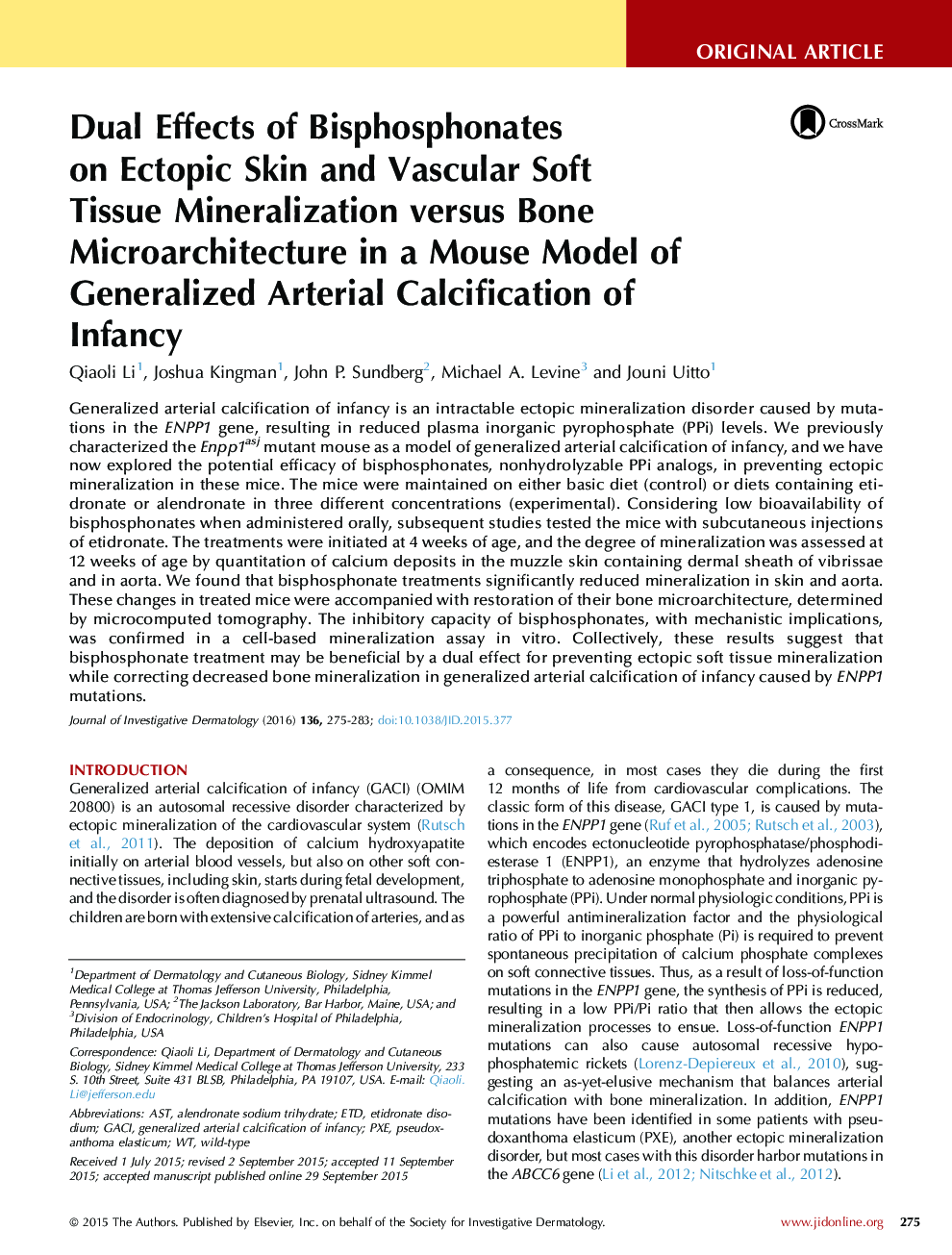| Article ID | Journal | Published Year | Pages | File Type |
|---|---|---|---|---|
| 6074804 | Journal of Investigative Dermatology | 2016 | 9 Pages |
Generalized arterial calcification of infancy is an intractable ectopic mineralization disorder caused by mutations in the ENPP1 gene, resulting in reduced plasma inorganic pyrophosphate (PPi) levels. We previously characterized the Enpp1asj mutant mouse as a model of generalized arterial calcification of infancy, and we have now explored the potential efficacy of bisphosphonates, nonhydrolyzable PPi analogs, in preventing ectopic mineralization in these mice. The mice were maintained on either basic diet (control) or diets containing etidronate or alendronate in three different concentrations (experimental). Considering low bioavailability of bisphosphonates when administered orally, subsequent studies tested the mice with subcutaneous injections of etidronate. The treatments were initiated at 4 weeks of age, and the degree of mineralization was assessed at 12 weeks of age by quantitation of calcium deposits in the muzzle skin containing dermal sheath of vibrissae and in aorta. We found that bisphosphonate treatments significantly reduced mineralization in skin and aorta. These changes in treated mice were accompanied with restoration of their bone microarchitecture, determined by microcomputed tomography. The inhibitory capacity of bisphosphonates, with mechanistic implications, was confirmed in a cell-based mineralization assay in vitro. Collectively, these results suggest that bisphosphonate treatment may be beneficial by a dual effect for preventing ectopic soft tissue mineralization while correcting decreased bone mineralization in generalized arterial calcification of infancy caused by ENPP1 mutations.
